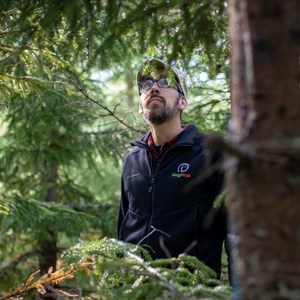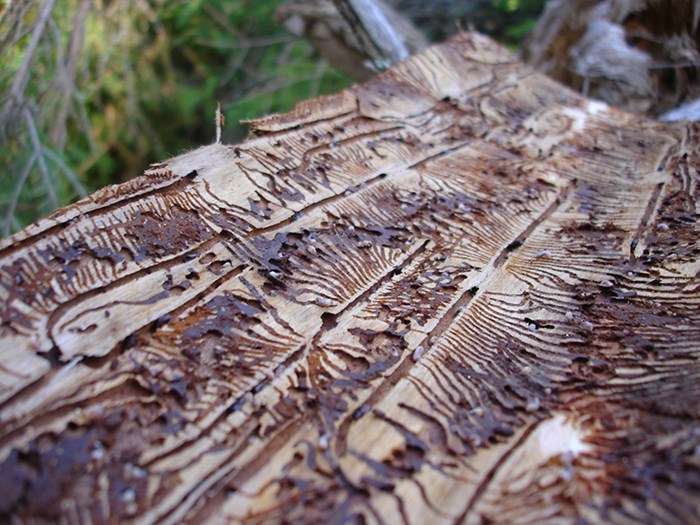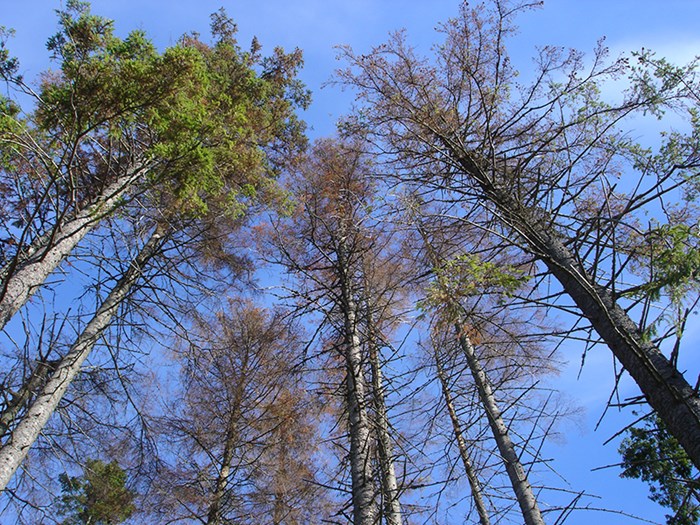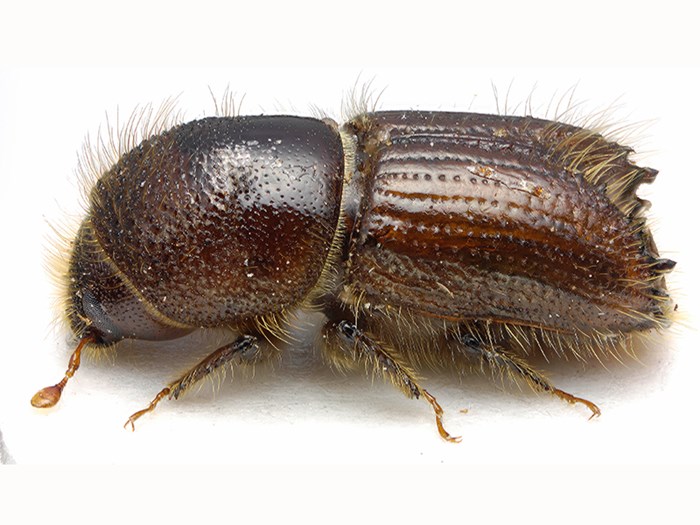Spruce bark beetle attacks in a time of climate change

Where and when does the spruce bark beetle attack? Petter Öhrn has investigated this as well as the spruce's defense capacity in his doctoral thesis. "It is particularly important for forest owners to find and remove infested trees in June".
Climate change has led to extensive drought and outbreaks of bark beetles in European forests. The spruce bark beetle, Ips typographus in latin, is a natural disturbance factor in spruce forests, but drought stress reduces the trees' defenses and makes them more susceptible to bark beetle attacks. This beetle is 5 mm long and burrows through the bark of spruce trees where it reproduces.
– Since the extreme drought of 2018 that affected large parts of Europe, including Sweden, the spruce bark beetle has attacked and killed hundreds of millions of cubic metres of spruce, says Petter.
Removing infested trees before the new generation leaves the trees is the best-known method for reducing the number of spruce bark beetles. Knowledge of when the spruce bark beetle attacks trees and the extent to which the trees can defend themselves is therefore important for forestry.
The bark beetles attack when the trees are most susceptible
In his doctoral thesis, Petter shows that the sister broods of the spruce bark beetle are often established when the trees are most susceptible to attack, specifically when the spruce is growing most actively in June.
– This makes it particularly important for the forest owner to detect new attacks during that period. My research also shows that the resistance of the spruce is reduced by drought, and that it takes a long time for the spruce to recover from a period of poor water availability. Drought in the previous year also results in lower resistance the following year, says Petter.
The spruce bark beetle gets help from a fungus
Mass attacks, meaning many boreholes within a short period, are facilitated by pheromones that allow the bark beetle to overcome the defence of living trees. When trees are stressed by drought, their resistance decreases, and fewer boreholes are needed to kill the tree. And a dead tree is a pre-requisite for the spruce bark beetle to reproduce in the bark.
To investigate determine the flight activity of spruce bark beetles during the summer, Petter used traps baited with pheromones, a compound that attracts the bark beetles. To determine when they start flying in the spring, Petter looked at fallen trees that had previously been attacked by bark beetles.
– I also investigated the spruce susceptibility to attack by measuring the growth
of a fungus carried by the spruce bark beetle. A culture of the fungus was injected into the bark, and we measured the growth of the fungus during different periods throughout the growing season, says Petter. Large growth of the fungus in the outer wood is expected to correspond to low defence against the spruce bark beetle.
The bark beetles flies at the end of April
The spruce bark beetle began to fly at the end of April to establish a first brood.
– The continued high flight activity later in the season indicated that sister broods were common. The new generation started to leave the infested trees at the end of June to initiate a second-generation brood, says Petter.
A recovery after the severe drought of 2018
The spruce resistance was on average lower during June than later in the season but varied with both the amount of precipitation and local soil moisture conditions. Resistance was higher in 2021 than in 2019, indicating a recovery after the severe drought of 2018.
In the current climate in southern Sweden, spruce resistance is lowest in June, when attacks from sister broods of spruce bark beetles are most common. This makes it particularly important for the forest owner to identify new attacks during this period.
– With ongoing climate change, knowledge of threshold values for both the development of the spruce bark beetle and the tree drought stress is crucial for better predicting the extent of spruce bark beetle attacks, concludes Petter.
Petter Öhrn defends his doctoral thesis ”Carbon castles vs. beetle-fungus armies: phenology of the spruce bark beetle and Norway spruce resistance in times of climate change” 19 April in Uppsala.
Links:
Läs Petter Öhrns doktorsavhandling “Carbon castles vs. beetle-fungus armies : phenology of the spruce bark beetle and Norway spruce resistance in times of climate change


